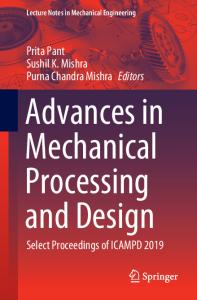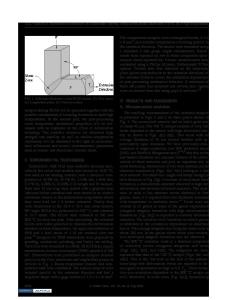The Effect of Severe Plastic Deformation on the Corrosion Resistance of AISI Type 304L Stainless Steel
- PDF / 3,287,968 Bytes
- 14 Pages / 593.972 x 792 pts Page_size
- 102 Downloads / 382 Views
JMEPEG https://doi.org/10.1007/s11665-020-05063-7
The Effect of Severe Plastic Deformation on the Corrosion Resistance of AISI Type 304L Stainless Steel Gopinath Shit and S. Ningshen (Submitted April 9, 2020; in revised form August 4, 2020) The AISI type 304L stainless steel (SS) was solution annealed at 1050 °C and cryo-rolled at liquid nitrogen (L-N2) temperature (77 K) under severe plastic deformation (SPD). The thickness reduction through cryorolling plastic deformation was carried out up to 90% (designated as CR-90) of initial thickness. The cryorolling during rolling at liquid N2 temperature (77 K), resulted in transformation induced plastic deformation of the austenite c-phase into aÕ- martensite phase. The phase transformation was characterized by xray diffraction (XRD) and saturation magnetization (Ms) measurement. The microstructure was measured by using optical microscopy (OM), scanning electron microscopy (SEM) and transmission electron microscopy (TEM). The XRD peak positions confirmed the martensite (aÕ) phase formation. Saturation magnetization (Ms) value of the cryo-rolled specimens shows increasing linearity with cryo-rolling, and transformed to bct martensite (aÕ). The measured corrosion rate of the cryo-rolled specimens as per ASTM A-262 practice-C test (Huey test) ranges from 6.6 mpy or 0.167 mm/yr (CR 0) to 12.9 mpy or 0.328 mm/yr (CR 90), indicating the effects of severe deformation of strain-induced martensite with the cryo-rolling. Further, the role of severe deformation of strain-induced martensite with the cryo-rolling on AISI type 304L SS and also influence on the corrosion resistance are investigated in detail. The deformation microstructure roles, i.e., the phases and volume percentage induced by the different percentage of the cryo-rolling that influences the corrosion resistance properties and corresponding corrosion resistance in nitric acid have been investigated. Keywords
corrosion, microstructure, phase transformation, Stainless steel, severe plastic deformation
1. Introduction Austenitic stainless steels are essential engineering materials with good formability, desirable strength, weldability, impact toughness, and corrosion resistance (Ref 1-5). The transformation of austenitic stainless steel from austenite to martensite has been the subject of research for past decades, enhancing the strength of structural materials for its application in a wide range of industries, chemical plants, and power, nuclear industries, transportation, etc. (Ref 4). Thus, providing an understanding of martensitic transformation is vital for practical aspects in the design and reliable utilization of stainless steel. The stainless steels are subject to phase transformation by plastic deformation, subzero cooling, and subzero deformation, hydrogen charging, ion implantation, and magnetron sputtering, etc. (Ref 2-8). These steels possess excellent mechanical strength to develop martensite and retained austenite from the metastable austenite phase by applied stress (Ref 6-10). However, phase transformat
Data Loading...











